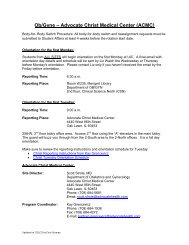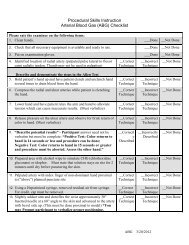a PDF version of the Full Hematology Oncology Curriculum
a PDF version of the Full Hematology Oncology Curriculum
a PDF version of the Full Hematology Oncology Curriculum
You also want an ePaper? Increase the reach of your titles
YUMPU automatically turns print PDFs into web optimized ePapers that Google loves.
s. Serum and urine protein electrophoreses and immunoelectrophoreses and/or immun<strong>of</strong>ixation<br />
t. Hematopathology tissue assessment techniques, including standard morphologic evaluation<br />
and <strong>the</strong> use <strong>of</strong> immunostaining<br />
u. Blood banking techniques <strong>of</strong> cross‐matching, antibody identification, direct antiglobulin test<br />
and indirect Coomb's test<br />
v. Apheresis, plasmapheresis, plateletpheresis, leukopheresis<br />
w. Therapeutic phlebotomy<br />
x. Exchange transfusion<br />
y. Immunocytochemistry<br />
z. Cytochemistry<br />
4. Transfusion Medicine<br />
a. Knowledge <strong>of</strong> <strong>the</strong> procedures used to collect, evaluate and prepare blood products<br />
b. Components <strong>of</strong> blood products typically administered to patients, including red blood cell<br />
(RBC) preparations, platelet preparations, granulocyte preparations, fresh frozen plasma and<br />
cryoprecipitate.<br />
c. Various methods by which <strong>the</strong>se blood products can be handled and prepared<br />
d. Clinical indications for use <strong>of</strong> specific blood products<br />
e. Potential risks associated with <strong>the</strong> administration <strong>of</strong> various blood products.<br />
a. allergic (anaphylactic) reactions<br />
b. graft versus host disease<br />
c. introduction <strong>of</strong> infectious organisms<br />
d. alloimmunization<br />
e. delayed transfusion reactions<br />
f. hemolytic reactions<br />
g. febrile reactions<br />
f. alternatives to blood product <strong>the</strong>rapies.<br />
g. mechanism by which apheresis can be used to isolate and collect specific blood components<br />
h. use <strong>of</strong> emergent plasmapheresis (as used in TTP) and leukapheresis (as used in AML)<br />
i. methods used for peripheral blood stem cell collections.<br />
5. Radiation Therapy<br />
a. Basic principles <strong>of</strong> radiation biology.<br />
b. Basic approaches <strong>of</strong> administering radiation <strong>the</strong>rapy, including <strong>the</strong> different radiation source<br />
types<br />
c. Short‐term toxicities and <strong>the</strong> potential long‐term consequences <strong>of</strong> radiation <strong>the</strong>rapy (e.g.<br />
secondary malignancies, coronary artery disease).<br />
d. Interactions <strong>of</strong> radiation <strong>the</strong>rapy with medications, including antineoplastic pharmacologic<br />
agents<br />
6. Normal Hematopoiesis<br />
a. Working understanding <strong>of</strong> hematopoiesis including:<br />
a. Stem cell plasticity, embryology and differentiation<br />
b. Erythropoiesis<br />
c. Leukocyte differentiation, maturation and trafficking<br />
d. Basics <strong>of</strong> lymphocyte biology<br />
e. Thrombopoiesis<br />
24



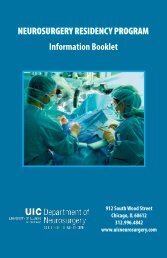
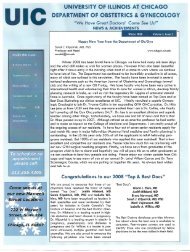
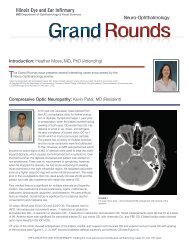
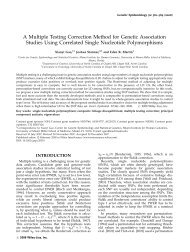
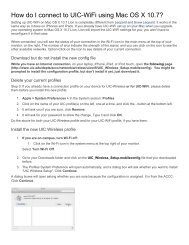
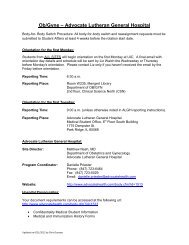

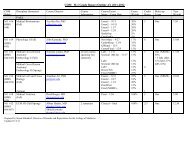

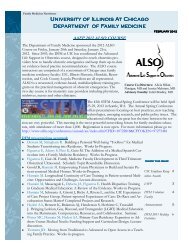
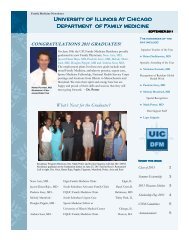
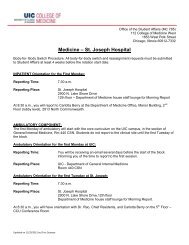
![CV Joan [W51] - University of Illinois College of Medicine at Chicago ...](https://img.yumpu.com/17336863/1/190x245/cv-joan-w51-university-of-illinois-college-of-medicine-at-chicago-.jpg?quality=85)
